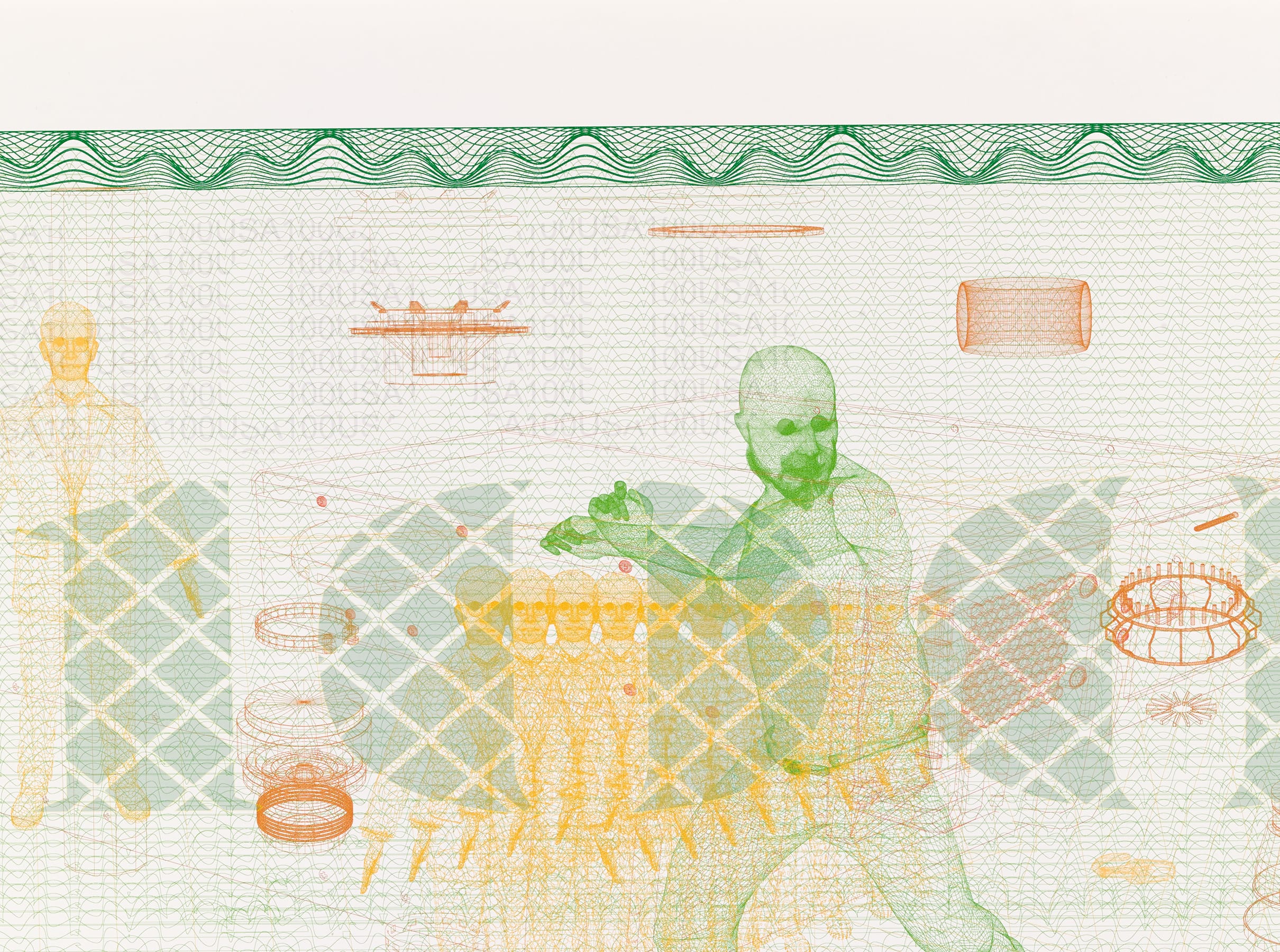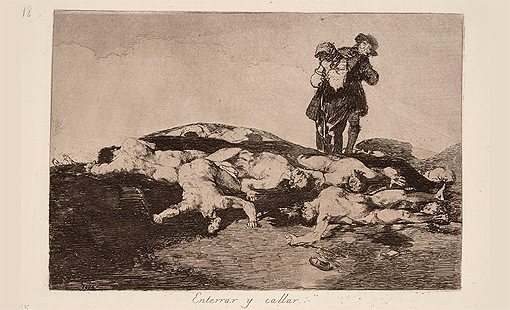
Fourteen Works from the Collection Loaned to Exhibitions by Spanish Art and Museum Organisations
The Banco de España is strongly committed to making its art collection as widely accessible to the public as possible, through projects promoted by the institution itself and also by loaning works for show in other galleries and art spaces. Over this summer, fourteen works from the Banco de España collection will be on display in the following exhibitions: Vistiendo un jardín [Wearing a Garden]![]() , at the San Telmo Museoa in Donostia-San Sebastián; Sorolla a través de la luz. De la tradición a la modernidad [Sorolla through Light. From Tradition to Modernity]
, at the San Telmo Museoa in Donostia-San Sebastián; Sorolla a través de la luz. De la tradición a la modernidad [Sorolla through Light. From Tradition to Modernity]![]() , at CIUDEN. Fundación Ciudad de la Energía (Condenser Hall, Térmica Cultural de Ponferrada); Soledad Sevilla. Ritmos, tramas, variables [Soledad Sevilla. Rhythms, Grids and Variables]
, at CIUDEN. Fundación Ciudad de la Energía (Condenser Hall, Térmica Cultural de Ponferrada); Soledad Sevilla. Ritmos, tramas, variables [Soledad Sevilla. Rhythms, Grids and Variables]![]() , at the IVAM (Institut Valencià d'Art Modern); José Guerrero. A propósito del paisaje [José Guerrero. Concerning Landscape]
, at the IVAM (Institut Valencià d'Art Modern); José Guerrero. A propósito del paisaje [José Guerrero. Concerning Landscape]![]() , at the Fundación Mapfre Madrid; Pintura liberada. Joven figuración española de los 80 [Liberated Painting. Young Spanish Figurative Art of the 1980s
, at the Fundación Mapfre Madrid; Pintura liberada. Joven figuración española de los 80 [Liberated Painting. Young Spanish Figurative Art of the 1980s![]() , at the Museo Carmen Thyssen, Malaga; and En el aire conmovido...Imagen, emoción, utopía [In the Troubled Air... Image, Emotion, Utopia]
, at the Museo Carmen Thyssen, Malaga; and En el aire conmovido...Imagen, emoción, utopía [In the Troubled Air... Image, Emotion, Utopia]![]() , at the CCCB-Barcelona Contemporary Culture Centre.
, at the CCCB-Barcelona Contemporary Culture Centre.
The first of these exhibitions, Wearing a Garden![]() , which runs until 28 September at the San Telmo Museoa,
, which runs until 28 September at the San Telmo Museoa,![]() 'deals with the evolution of floral motifs between the Baroque period and the Enlightenment', exploring how depictions of flowers reflect the 'profound changes that came about at this time in humanity’s relationship with the natural world, as well as the ferment of new artistic, scientific and philosophical ideas.'. For the show, curated by Gema Batanero López, the Banco de España has loaned three works: two paintings of flower vases by Gabriel de la Corte and a photograph by Paula Anta from her Artificial Paradises series.
'deals with the evolution of floral motifs between the Baroque period and the Enlightenment', exploring how depictions of flowers reflect the 'profound changes that came about at this time in humanity’s relationship with the natural world, as well as the ferment of new artistic, scientific and philosophical ideas.'. For the show, curated by Gema Batanero López, the Banco de España has loaned three works: two paintings of flower vases by Gabriel de la Corte and a photograph by Paula Anta from her Artificial Paradises series.
 Gabriel de la Corte: Flower Vase (c. 1687) | Flower Vase (c. 1687). Banco de España Collection
Gabriel de la Corte: Flower Vase (c. 1687) | Flower Vase (c. 1687). Banco de España Collection
These two late seventeenth-century works are paradigmatic examples of the work of the Flemish-born Gabriel de la Corte, a specialist in the subgenre of floral art. Little was known about this painter unit recently, leading to some misattribution of these paintings. As Ángel Aterido notes, the first of the two is notable for the voluminous carved foot of the vase and the 'dynamic and colourful softness' of the arrangement, which a contemporary audience would have particularly admired; while the forms of the models in the second is more reminiscent of the work of Juan de Arellano. 'The two compositions,' adds Aterido, 'were intended as a complementary whole with a clearly decorative purpose, as objects in which nature was brought indoors and isolated in the urban environment'.
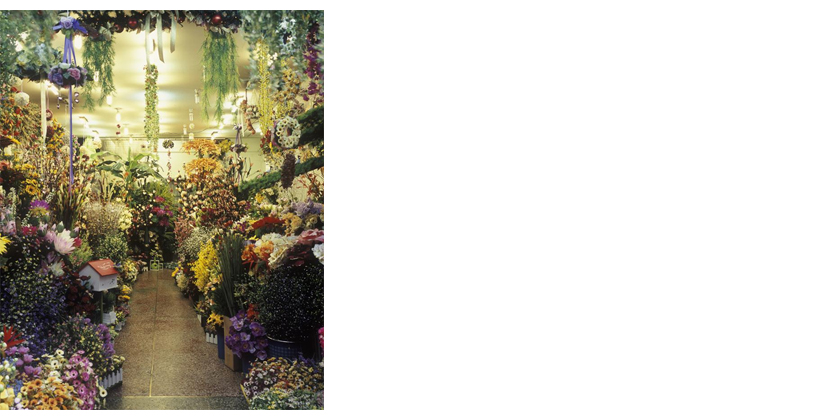 Paula Anta: Busan02 (series Artificial Paradises), 2008. Banco de España Collection
Paula Anta: Busan02 (series Artificial Paradises), 2008. Banco de España Collection
Busan02 (2008) is one of three pictures from Paula Anta's Artificial Paradises series acquired by the Banco de España in 2022, in which she uses photographs of South Korean artificial plant and flower shops to reflect on issues such as the progressive alienation from nature in industrialised societies and the particular fascination that certain Asian cultures have with the practice of copying.
Sorolla through Light. From Tradition to Modernity![]() can be seen in the Condenser Hall at La Térmica Cultural
can be seen in the Condenser Hall at La Térmica Cultural![]() in Ponferrada (a venue run by the Fundación Ciudad de Energía (CIUDEN)
in Ponferrada (a venue run by the Fundación Ciudad de Energía (CIUDEN)![]() until 13 October. Amongst the works on show will be In the Tavern. Zarauz, one of several paintings by the Valencian artist in the Banco de España collection. With a selection of forty works from different points in his career, the exhibition examines the life and work of Joaquín Sorolla y Bastida, showing how his work combines the national tradition, 'associated with the particular idiosyncrasy of specifically Spanish features', with other resources and discoveries taken from the avant-garde art of his time.
until 13 October. Amongst the works on show will be In the Tavern. Zarauz, one of several paintings by the Valencian artist in the Banco de España collection. With a selection of forty works from different points in his career, the exhibition examines the life and work of Joaquín Sorolla y Bastida, showing how his work combines the national tradition, 'associated with the particular idiosyncrasy of specifically Spanish features', with other resources and discoveries taken from the avant-garde art of his time.
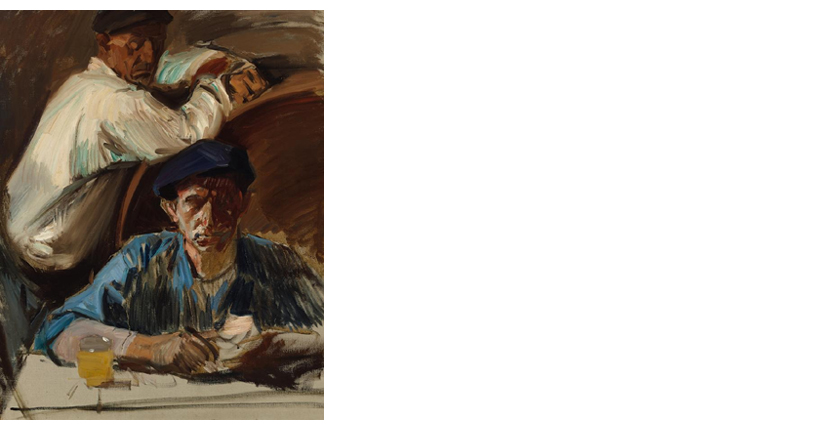 Joaquín Sorolla: In the Tavern. Zarauz(1910). Banco de España Collection
Joaquín Sorolla: In the Tavern. Zarauz(1910). Banco de España Collection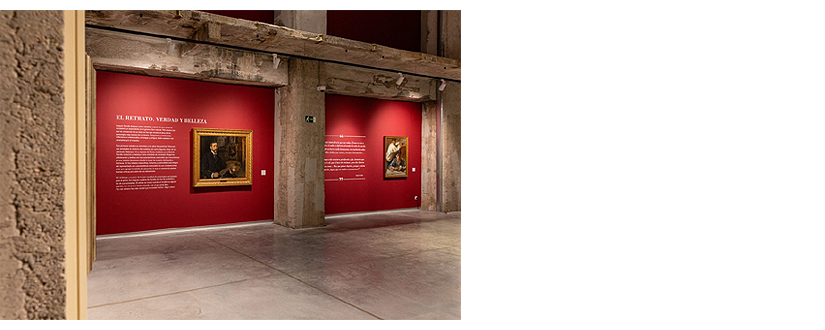 View of the Sorolla through Light. From Tradition to Modernity exhibition with the painting In the Tavern. Zarauz (Joaquín Sorolla, 1910)
View of the Sorolla through Light. From Tradition to Modernity exhibition with the painting In the Tavern. Zarauz (Joaquín Sorolla, 1910)
Dating from 1910, In the Tavern. Zarauz was one of many pictures painted by Sorolla during his summer sojourns on the Gipuzkoa coast. They include depictions of Spanish high society on holiday, in which he experimented with the Atlantic light, so different to that of his native Valencia, and also portraits of ordinary local people and their everyday occupations. In the Tavern. Zarauz, with its simple, almost photographic frontal composition, belongs to the latter group. As Mónica Rodríguez Subirana explains, it is also a fine example of Sorolla's enduring interest in depicting common folk at moments of leisure and rest, in intimate scenes that function 'almost as portraits, that are not only physical but also reflect customs'.
We have also loaned four pieces from the collection by another Valencian artist, Soledad Sevilla (winner of the Velázquez Prize for Plastic Arts 2020), for Rhythms, Grids and Variables![]() , a retrospective of her work being staged by the Museo Reina Sofia at IVAM (Institut Valencià d'Art Modern)
, a retrospective of her work being staged by the Museo Reina Sofia at IVAM (Institut Valencià d'Art Modern)![]() . Curated by Isabel Tejeda, the exhibition looks back at the artist's 60-year career. It includes over a hundred separate pieces, ranging from her early work at the Calculus Centre in the University of Madrid to some created especially for the exhibition.
. Curated by Isabel Tejeda, the exhibition looks back at the artist's 60-year career. It includes over a hundred separate pieces, ranging from her early work at the Calculus Centre in the University of Madrid to some created especially for the exhibition.
 Soledad Sevilla: Las Meninas V (1982). Banco de España Collection
Soledad Sevilla: Las Meninas V (1982). Banco de España Collection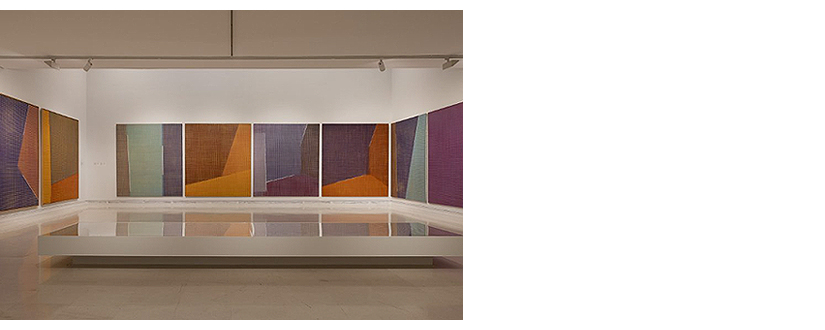 View of the Rhythms, Grids and Variables with Las Meninas V exhibition (Soledad Sevilla, 1982)
View of the Rhythms, Grids and Variables with Las Meninas V exhibition (Soledad Sevilla, 1982)
For this exhibition, we have loaned four pieces by Sevilla – Las Meninas V, Belmont VI, Belmont VII and Belmont VIII – all dating from the early 1980s. This was a key period in the artist's career, who was furthering her studies at Harvard University having obtained a research fellowship from the Joint Spanish and North American Committee for Cultural and Educational Affairs. It was here that she took a new direction in the research into geometric patterns she had been conducting since the late 1960s. One of her most important works in this area was her series devoted to Velázquez's painting of Las Meninas, which – notes Yolanda Romero – not only shows her growing interest in representing space through its immaterial components, but also introduces a poetic, emotional component that was to become central to her later work. These two features are also latent in her Belmont series (the title is taken from the district of Boston in which she was living at the time).
 Soledad Sevilla: Belmont VII (1982) | Belmont VIII (1982). Banco de España Collection
Soledad Sevilla: Belmont VII (1982) | Belmont VIII (1982). Banco de España Collection
Another exhibition with works on loan from the Banco de España collection is José Guerrero. Concerning Landscape![]() , organised by Fundación Mapfre
, organised by Fundación Mapfre![]() , which opened last February at the Centro de Fotografía KBr in Barcelona and is now showing at the foundation's head offices in Madrid on Paseo Recoletos. Curated by Marta Gili, the exhibition embraces the Granada photographer's entire career. It shows how, like other artists of his generation, Guerrero views the landscape as a 'living entity', with the result that he seeks to go 'far beyond mere representation' in his photographs to try to uncover the memories and tensions the landscape contains.
, which opened last February at the Centro de Fotografía KBr in Barcelona and is now showing at the foundation's head offices in Madrid on Paseo Recoletos. Curated by Marta Gili, the exhibition embraces the Granada photographer's entire career. It shows how, like other artists of his generation, Guerrero views the landscape as a 'living entity', with the result that he seeks to go 'far beyond mere representation' in his photographs to try to uncover the memories and tensions the landscape contains.
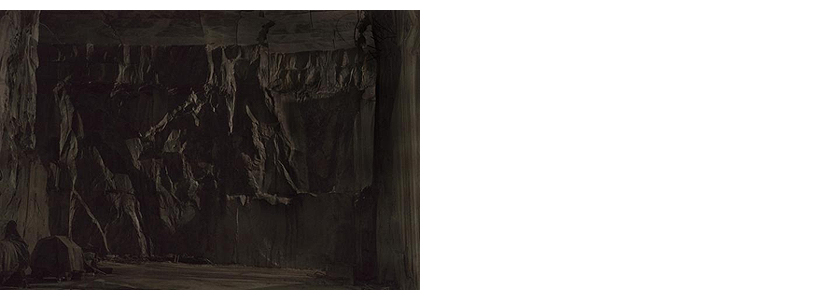 José Guerrero: Carrara #3(2016). Banco de España Collection
José Guerrero: Carrara #3(2016). Banco de España Collection
In the series from which the two photographs loaned by the Bank for the exhibition – Carrara #3 and Carrara #5 – are taken, José Guerrero, who has a background in architecture, addresses a landscape charged with history and symbolic connotations: the Carrara quarries in northern Tuscany. Since ancient times, Carrara marble has been associated with the architecture of power and a culture of luxury. As Carlos Martín writes, this exploration of the place where the material is quarried, with a photographic series showing the hollows in the rock left by the extraction process ('a sort of unintentional architecture that has its own extraordinary visual power'), is an extension of Guerrero's experimentation, somewhere between documentary and abstract photography. At the same time, it offers a reflection on issues such as the 'suggestive capacity of ancient constructions' and the effects on the territory of the mass exploitation of natural resources.
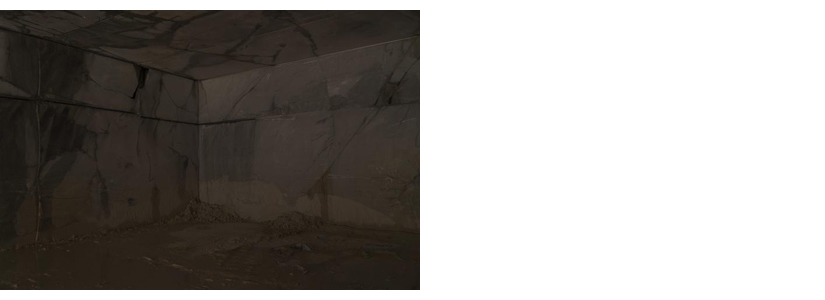 José Guerrero: Carrara #5 (2016). Banco de España Collection
José Guerrero: Carrara #5 (2016). Banco de España Collection
Landscape as a means of exploring memory is also a central theme of the work of Juan Fernández Lacomba, whose Tower, Figures and Birds (1985) has been loaned out for the Liberated Painting. Young Spanish Figurative Art of the 1980s![]() exhibition at the Museo Carmen Thyssen in Malaga
exhibition at the Museo Carmen Thyssen in Malaga![]() . The exhibition, which can be viewed until 14 September, includes around thirty pictures from the 1980s. After the prevailing hegemony of Art Informel and collective conceptual art of the two previous decades, a new figurative painting emerged during this period, characterised by an expressionist emphasis on form and colour that reflected 'the rare and long yearned-for climate of liberty' that Spain experienced in the early years following the restoration of democracy.
. The exhibition, which can be viewed until 14 September, includes around thirty pictures from the 1980s. After the prevailing hegemony of Art Informel and collective conceptual art of the two previous decades, a new figurative painting emerged during this period, characterised by an expressionist emphasis on form and colour that reflected 'the rare and long yearned-for climate of liberty' that Spain experienced in the early years following the restoration of democracy.
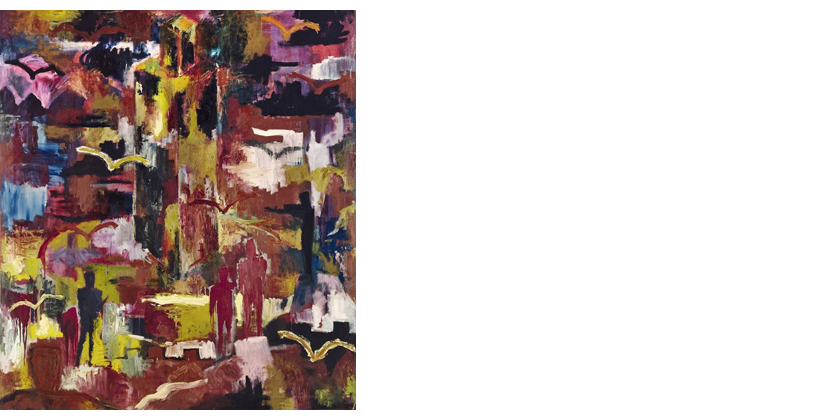 Juan Fernández Lacomba: Tower, Figures and Birds (1985). Banco de España Collection
Juan Fernández Lacomba: Tower, Figures and Birds (1985). Banco de España Collection
 Virtual tour
Virtual tour![]() of the Liberated Painting. Young Spanish Figurative Art of the 1980s, exhibition including Tower, Figures and Birds (Juan Fernández Lacomba, 1985)
of the Liberated Painting. Young Spanish Figurative Art of the 1980s, exhibition including Tower, Figures and Birds (Juan Fernández Lacomba, 1985)
With a palette of predominantly earthy colours, Tower, Figures and Birds is an example of Fernández Lacomba's singular plastic language, marked by his propensity for gesture, transparency and quasi-organic forms. This painting, with its 'brusque, expressive brushstrokes that call out to the emotions,' – writes Frederic Montornés – 'traces a path through a landscape along which three figures are strolling before a flock of birds taking flight, with a tower in the background that resembles the Giralda in Seville'. The descriptive title, Montornés adds, 'gives a glimpse of how landscape can summarise what post-abstraction means to the artist'.
 Francisco de Goya: Rain of Bulls (Folly of Little Bulls) (from the Follies series (1815-1824). Banco de España Collection
Francisco de Goya: Rain of Bulls (Folly of Little Bulls) (from the Follies series (1815-1824). Banco de España Collection
Finally, In the Troubled Air...Image, Emotion, Utopia![]() is an exhibition curated by art philosopher and historian Georges Didi-Huberman, containing around three hundred works from very different periods and provenances in a great variety of formats. For the show, we have loaned three prints by Francisco de Goya: one from his series of Follies and another two from the Disasters of War. Organised by the Museo Reina Sofía
is an exhibition curated by art philosopher and historian Georges Didi-Huberman, containing around three hundred works from very different periods and provenances in a great variety of formats. For the show, we have loaned three prints by Francisco de Goya: one from his series of Follies and another two from the Disasters of War. Organised by the Museo Reina Sofía![]() , where it was on display
, where it was on display![]() from 6 November 2024 to 17 March 2025, and the Barcelona Contemporary Culture Centre (CCCB
from 6 November 2024 to 17 March 2025, and the Barcelona Contemporary Culture Centre (CCCB![]() ), where it will run until 28 September, the exhibition offers a polyphonic account of the way in which emotion has been represented and expressed in art, exploring its capacity to burst out and overwhelm us, to become 'commotion' and acquire a political dimension.
), where it will run until 28 September, the exhibition offers a polyphonic account of the way in which emotion has been represented and expressed in art, exploring its capacity to burst out and overwhelm us, to become 'commotion' and acquire a political dimension.
 Francisco de Goya: What courage! (from the Disasters of War series, 1810-1814) | Bury Them and Keep Quiet (from the Disasters of War series, 1810-1814). Banco de España Collection
Francisco de Goya: What courage! (from the Disasters of War series, 1810-1814) | Bury Them and Keep Quiet (from the Disasters of War series, 1810-1814). Banco de España Collection
The exact of date Goya's series of Follies is not known; however, we do know for certain that it was begun before 1816. It is striking for the expressive deformation of the figures and demonstrates Goya's position as a forerunner of modernism and the way in which he broke with the prevailing logic of imitation, placing the artist's imagination and subjectivity at the heart of his work. The Banco de España collection has four prints from the series, one of which – Rain of Bulls (Folly of Little Bulls) – is now on loan to the In the Troubled Air... Image, Emotion, Utopia exhibition. We have also loaned What Courage! and Bury Them and Keep Quiet from Disasters of War, a set of 80 prints produced by the Aragonese painter between 1810 and 1814, in which – as José Manuel Mantilla writes – he managed to create a universal – and timeless – iconographic imaginary on the 'theme of violence'. More than two centuries after its creation, the images from this series continue to challenge and move us. 'Merely to contemplate these prints,’ says Mantilla, 'is like a gut-punch to our conscience'.
